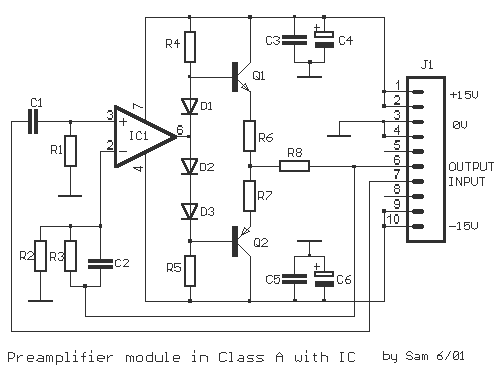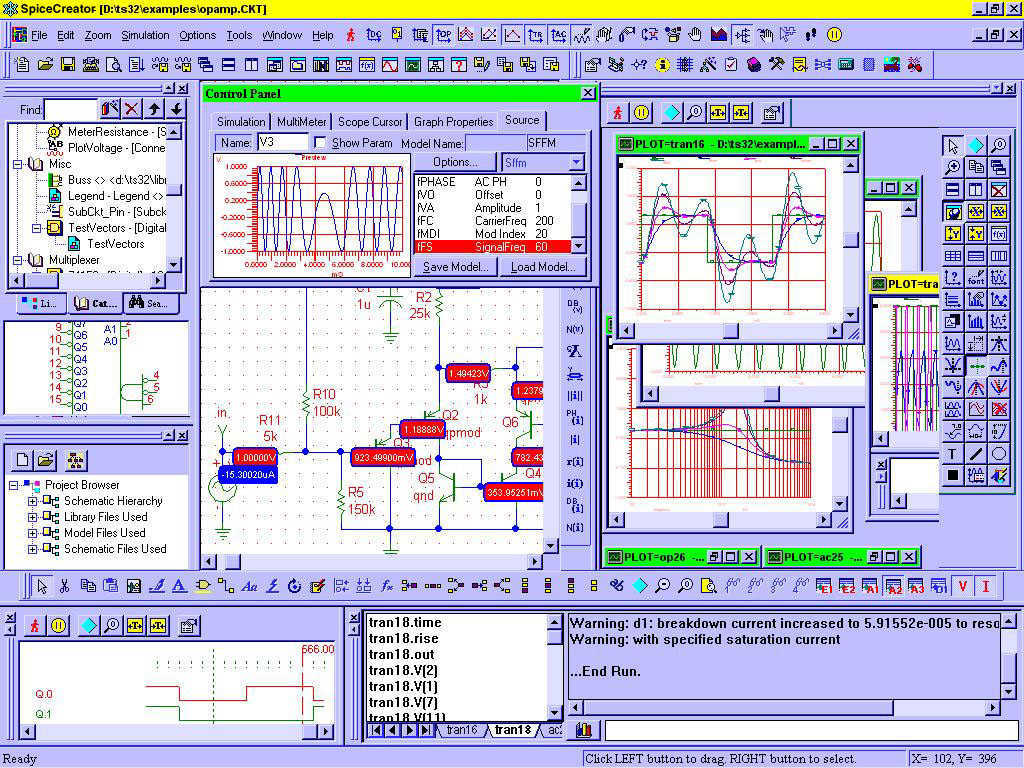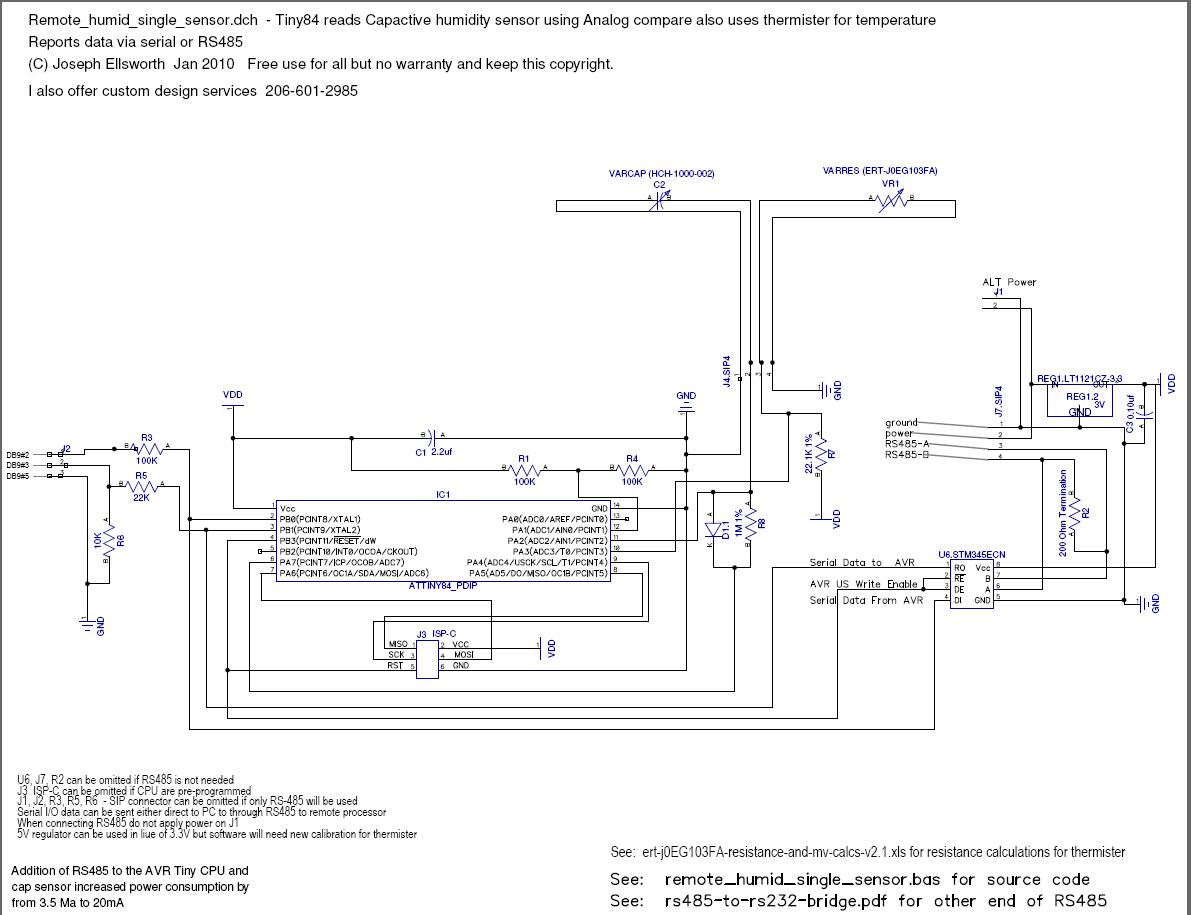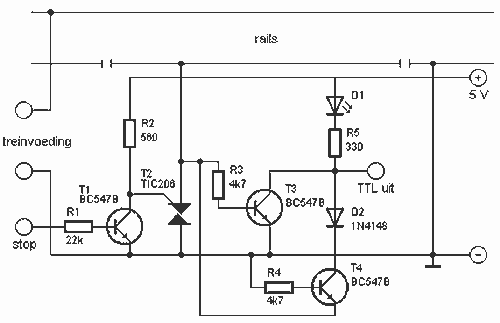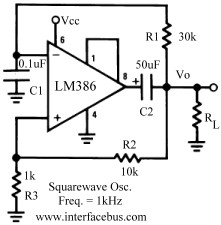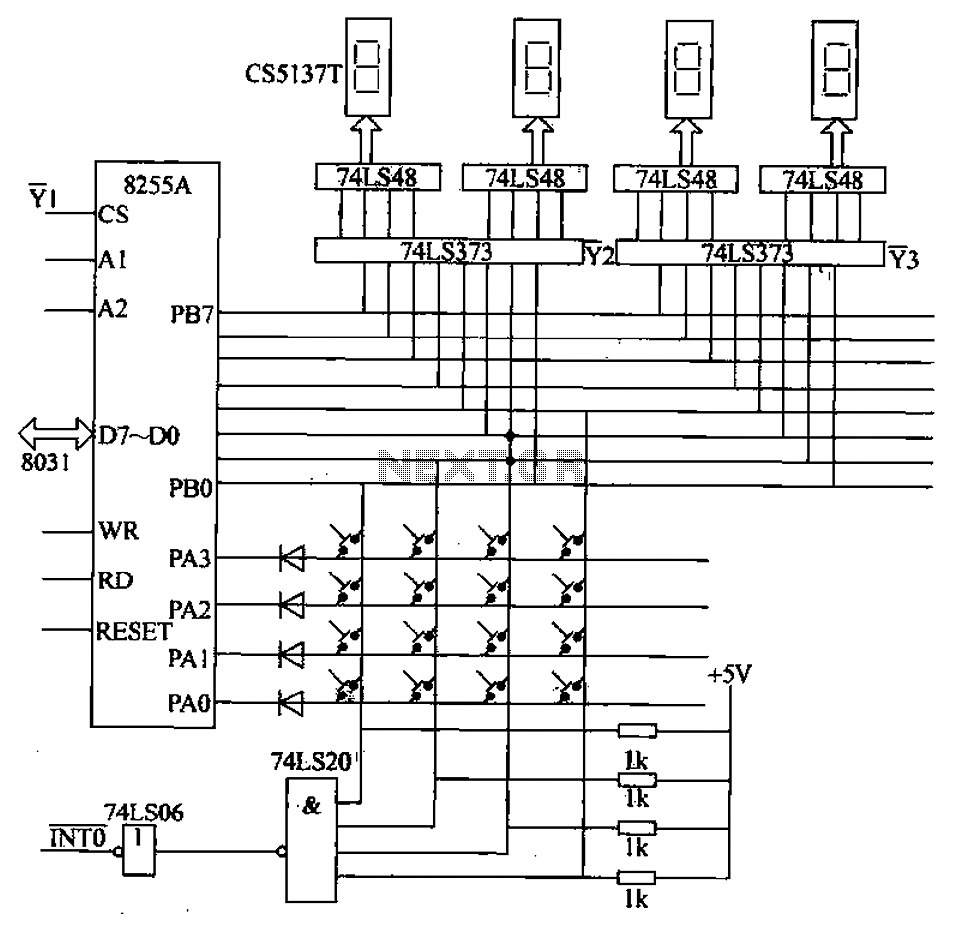
Lm318 Microphone preamplifier with tone control circuit and explanation
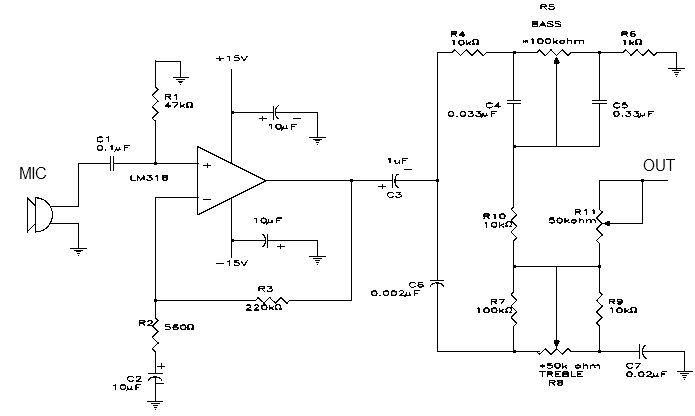
This electronic project is a simple microphone preamplifier based on the LM318 operational amplifier. The LM318 is configured as a standard non-inverting amplifier. Resistor R1 provides a ground reference for the bias current of the non-inverting input. The combination of R2 and C2 creates a frequency roll-off below 30 Hz. Above 30 Hz, the gain remains relatively flat at approximately 50 dB, determined by the ratio of R3 to R2. R3 provides negative feedback from the output to the inverting input of the op amp. Capacitor C3 AC couples the preamplifier to the tone control section. The upper portion of the tone control section adjusts the bass, while the lower portion manages the treble frequency response. The tone controls, represented by resistors R5 and R8, require audio taper (logarithmic) potentiometers. A 50 k ohm potentiometer at the output can be utilized to adjust the output level or gain of the preamplifier. The circuit is straightforward and requires only a few electronic components. This microphone preamplifier project needs to be powered by a dual 15 volt DC power supply.
The microphone preamplifier circuit utilizes the LM318 operational amplifier, which is known for its high speed and wide bandwidth, making it suitable for audio applications. The non-inverting configuration allows for a high input impedance, which is essential for interfacing with microphones without loading them down. The biasing network, consisting of resistor R1, ensures stable operation by providing a DC path to ground, which helps maintain the input at a defined potential.
The frequency response of the circuit is tailored by the combination of R2 and C2, which introduces a high-pass filter characteristic that attenuates frequencies below 30 Hz, thus eliminating unwanted low-frequency noise. The gain of the amplifier is set by the feedback network formed by R3 and R2, allowing for a gain of approximately 50 dB, which is suitable for most microphone applications.
Capacitor C3 serves as an AC coupling element, isolating the preamplifier from the subsequent tone control section. This coupling is crucial to prevent DC offset from affecting the tone controls and ensures that only the AC audio signal passes through.
The tone control section is divided into two halves, with one half dedicated to bass control and the other to treble control. The use of audio taper potentiometers for R5 and R8 allows for a more natural adjustment of tone, as they provide a logarithmic response that aligns with human hearing perception.
The output stage of the preamplifier features a 50 k ohm potentiometer, which can be adjusted to set the final output level or gain of the preamplifier, providing flexibility for different microphone sensitivities and downstream equipment requirements.
Powering the circuit with a dual 15 volt DC supply ensures that the LM318 operates within its optimal voltage range, providing sufficient headroom for audio signals without distortion. Overall, this microphone preamplifier circuit is an efficient and effective solution for enhancing microphone signals before they are processed by further audio equipment.This electronic project is a simple microphone preamplifier based on the LM318 op amp. The LM318 op amp is operated as a standard non-inverting amplifier. Resistor R1 provides an input path to ground for the bias current of the non-inverting input. The combination of R2 and C2 provides a frequency roll-off below 30 Hz. At 30 Hz and above the gain is relatively flat at about 50 dB, set by the ratio R3/R2. R3 furnishes negative feedback from the output to the inverting input of the op amp. C3 ac couples the preamp to the tone control section. The top half of the tone control section is the bass control. The bottom half controls the treble frequency response. These tone controls (R5 and R8) require audio taper (logarithmic) potentiometers. The 50 k ohm potentiometer on the output can be used to set the output or gain of the preamp. The circuit is very simple and require few electronic parts. This microphone preamplifier electronic project must be powered from a dual 15 volt DC power supply. 🔗 External reference
The microphone preamplifier circuit utilizes the LM318 operational amplifier, which is known for its high speed and wide bandwidth, making it suitable for audio applications. The non-inverting configuration allows for a high input impedance, which is essential for interfacing with microphones without loading them down. The biasing network, consisting of resistor R1, ensures stable operation by providing a DC path to ground, which helps maintain the input at a defined potential.
The frequency response of the circuit is tailored by the combination of R2 and C2, which introduces a high-pass filter characteristic that attenuates frequencies below 30 Hz, thus eliminating unwanted low-frequency noise. The gain of the amplifier is set by the feedback network formed by R3 and R2, allowing for a gain of approximately 50 dB, which is suitable for most microphone applications.
Capacitor C3 serves as an AC coupling element, isolating the preamplifier from the subsequent tone control section. This coupling is crucial to prevent DC offset from affecting the tone controls and ensures that only the AC audio signal passes through.
The tone control section is divided into two halves, with one half dedicated to bass control and the other to treble control. The use of audio taper potentiometers for R5 and R8 allows for a more natural adjustment of tone, as they provide a logarithmic response that aligns with human hearing perception.
The output stage of the preamplifier features a 50 k ohm potentiometer, which can be adjusted to set the final output level or gain of the preamplifier, providing flexibility for different microphone sensitivities and downstream equipment requirements.
Powering the circuit with a dual 15 volt DC supply ensures that the LM318 operates within its optimal voltage range, providing sufficient headroom for audio signals without distortion. Overall, this microphone preamplifier circuit is an efficient and effective solution for enhancing microphone signals before they are processed by further audio equipment.This electronic project is a simple microphone preamplifier based on the LM318 op amp. The LM318 op amp is operated as a standard non-inverting amplifier. Resistor R1 provides an input path to ground for the bias current of the non-inverting input. The combination of R2 and C2 provides a frequency roll-off below 30 Hz. At 30 Hz and above the gain is relatively flat at about 50 dB, set by the ratio R3/R2. R3 furnishes negative feedback from the output to the inverting input of the op amp. C3 ac couples the preamp to the tone control section. The top half of the tone control section is the bass control. The bottom half controls the treble frequency response. These tone controls (R5 and R8) require audio taper (logarithmic) potentiometers. The 50 k ohm potentiometer on the output can be used to set the output or gain of the preamp. The circuit is very simple and require few electronic parts. This microphone preamplifier electronic project must be powered from a dual 15 volt DC power supply. 🔗 External reference
